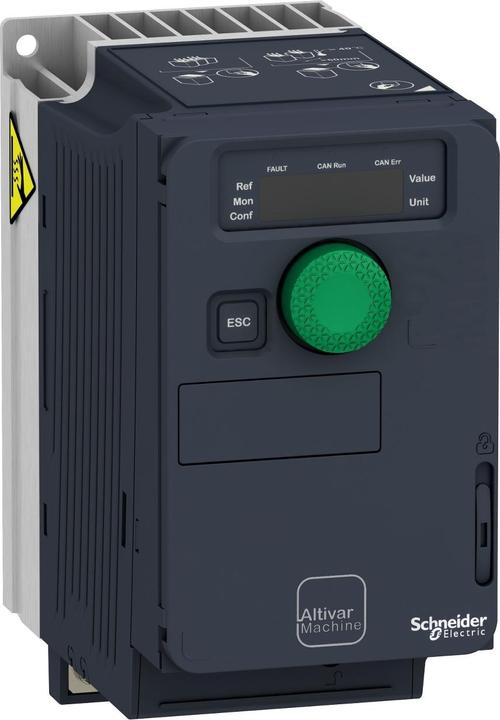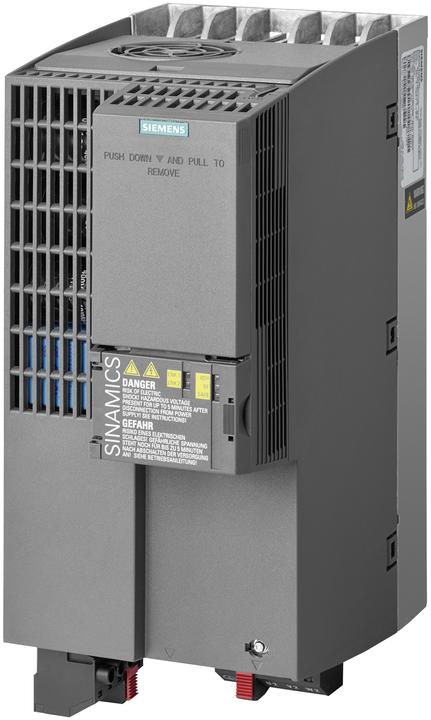
Schneider Electric Frequency converter
Last updated 2 days ago. Automatically generated content.


Select options and limit the number of products
Power in frequency converters refers to the capacity to handle electrical loads, influencing the range of applications it can support. Selecting the appropriate power level ensures efficient operation and optimal performance across different devices and machinery.
Up to 5 kW
Typical price
800.– to 1300.–
Suitable for small-scale applications and light-duty machinery.
Ideal for residential or small business use, providing sufficient power for basic needs.
Bestseller

Schneider Electric Frequency converter
6 - 20 kW
Typical price
1700.– to 2700.–
Designed for medium-scale operations and more demanding equipment.
Offers versatility for commercial environments, balancing power and efficiency for diverse applications.
Bestseller
21 - 60 kW
Typical price
3400.– to 6900.–
Supports large-scale industrial operations and heavy-duty machinery.
Ensures robust performance in high-demand settings, suitable for factories and extensive installations.
Bestseller
Electric current output refers to the amount of current a frequency converter can deliver, which affects its capacity to power connected devices. Choosing the appropriate electric current output is essential for ensuring compatibility with your equipment and achieving optimal performance.
Up to 10 A
Typical price
460.– to 1300.–
Suitable for low-power applications, such as small motors and fans.
Ideal for residential use or small-scale industrial projects where energy consumption is minimal.
Bestseller

Schneider Electric Frequency converter
11 - 40 A
Typical price
1100.– to 2400.–
Provides a moderate level of power suitable for medium-sized machinery.
Great for small to medium industrial applications, offering a balance between power and efficiency.
Bestseller
41 - 120 A
Typical price
2900.– to 6900.–
Designed for high-power applications, including large industrial machinery.
Recommended for heavy-duty operations, ensuring robust performance and reliability.
Bestseller
Supports protocol refers to the communication standards a frequency converter can interface with, crucial for integrating into existing systems. It ensures compatibility and seamless operation within industrial networks, enhancing efficiency and control.
Modbus
Typical price
610.– to 2700.–
Widely-used protocol for serial communication, enabling easy integration with various devices.
Ideal for settings requiring simple setup and reliable data exchange across different equipment.
Bestseller
EtherNet/IP
Typical price
990.– to 4300.–
Utilizes Ethernet for industrial data exchange, offering high-speed connectivity and large data capacity.
Perfect for real-time control applications, ensuring fast and efficient communication in complex environments.
Bestseller
PROFINET IO
Typical price
990.– to 3200.–
High-performance protocol designed for automation, providing real-time data transfer and diagnostics.
Recommended for industries needing robust network management and precise control, enhancing operational efficiency.
Bestseller
TCP/IP
Typical price
1100.– to 2900.–
Universal protocol for internet communication, ensuring compatibility with a vast range of devices.
Suitable for remote monitoring and control, offering flexible and scalable networking solutions.
Bestseller
Output frequency refers to the range of frequencies a frequency converter can produce, crucial for ensuring compatibility with the equipment being operated. Selecting the appropriate output frequency is vital for optimal performance and efficiency, as it directly affects the speed and torque of motors and other electrical devices.
50 - 60 Hz
Typical price
940.– to 3100.–
Standard frequency range commonly used in most regions and applications.
Suitable for general-purpose use, ensuring compatibility with a wide range of equipment.
Bestseller

Schneider Electric Frequency converter
47 / 63 Hz
Typical price
1100.– to 6200.–
Offers a slightly extended range for specific applications requiring non-standard frequencies.
Ideal for specialized industrial processes or equipment that operate outside the standard frequency range.
Bestseller
57 / 63 Hz
Typical price
840.– to 1200.–
Provides a higher frequency range for applications needing increased speed or efficiency.
Recommended for equipment designed for faster operation, enhancing productivity in specific scenarios.
Bestseller
Mains voltage refers to the electrical supply voltage compatible with frequency converters, affecting their operation and efficiency. Choosing the correct mains voltage ensures optimal performance, energy savings, and compatibility with existing electrical systems.
200 - 240 V
Typical price
710.– to 2900.–
Suitable for residential and light commercial applications, providing flexibility across various devices.
Ideal for regions with standard household voltage, ensuring compatibility and reducing conversion costs.
Bestseller

Schneider Electric Frequency converter
380 V
Typical price
1100.– to 4300.–
Common in industrial settings, offering robust power for heavy machinery and equipment.
Ensures reliable performance in demanding environments, supporting efficient operation of large-scale systems.
Bestseller
230 V
Typical price
440.– to 2400.–
Standard voltage in many households globally, facilitating integration with common appliances.
Offers balance between power and efficiency, minimizing energy consumption and operational costs.
Bestseller
400 V
Typical price
1300.– to 7800.–
Designed for intensive industrial applications, delivering higher power output.
Ensures stability and efficiency in factories, supporting continuous operation and reducing downtime.
Bestseller